

Boulay Chapter 1. By R.
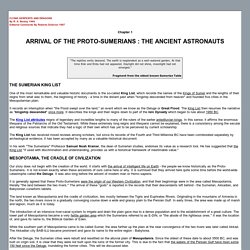
A. Boulay 1990 Editorial Comments By Roberto Solàrion 1997 Chapter 1. Sumerian Tablets - written later - THE WORDS OF ENKI. Endubsar had written the Sumerian Tablets before the Sumerian clay tablets were written.
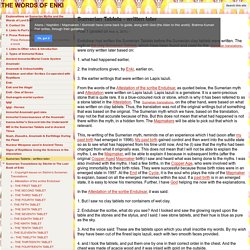
The myth in the clay Sumerian Tablets, which have been found and used for the Sumerian translations, were only written later based on: 1. what had happened earlier, 2. the instructions given, by Enki, earlier on, 3. the earlier writings that were written on Lapis lazuli. From the words of the Attestation of the scribe Endubsar, as quoted below, the Sumerian myth and Attestation were written on Lapis lazuli.
This, re-writing of the Sumerian myth, reminds me of an experience which I had (soon after my past birth had emerged in 1996). The origins of human beings according to ancient Sumerian texts. Sumer, or the ‘land of civilized kings’, flourished in Mesopotamia, now modern-day Iraq, around 4500 BC.
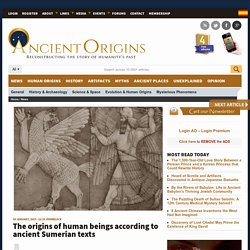
Sumerians created an advanced civilization with its own system of elaborate language and writing, architecture and arts, astronomy and mathematics. Their religious system was a complex one comprised of hundreds of gods. According to the ancient texts, each Sumerian city was guarded by its own god; and while humans and gods used to live together, the humans were servants to the gods. The Sumerian creation myth can be found on a tablet in Nippur, an ancient Mesopotamian city founded in approximately 5000 BC. The Cat of Bubastes : G. A. Henty.
LibriVox recording of The Cat of Bubastes, by G.
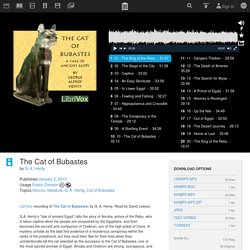
A. Henty. Read by David Leeson. The cat of Bubastes : a tale of ancient Egypt. The Rise of Civilizations. Ancient Egypt - Homeschool Den. A Mythology Unit For Elementary Students. Ancient Mesopotamia: This History, Our History. Teaching Materials. What were the innovations of Mesopotamian civilization. Mesopotamia (Sumerians, first civilization on earth) Human Origins from Sumerians, Annunaki, and Nibiru (Full Documentary) Mesopotamian Civilization. Mesopotamia. Mesopotamia and the Fertile Crescent. Before they settled down in various parts of the world, humans lived as nomads for tens of thousands of years.

Nomads are people who have no permanent home and travel in search of food and safety. A typical nomadic group might include an extended family of about ten adults and their children. They would temporarily camp in an area for a few weeks or months -- the men hunting animals and the women gathering fruit, grains, seeds and nuts. Ancient Civilizations. A Mythology Unit For Elementary Students. Ancient Egypt - Menu page.
Ancient India - Ancient Civilizations for Kids. 50 or 60 million years ago India slowly smashed into Asia and formed the Himalaya and Hindu Kush Mountains that nearly block off India from the surrounding area.
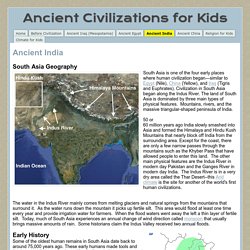
Except for the coast, there are only a few narrow passes through the mountains such as the Khyber Pass that have allowed people to enter this land. The other main physical features are the Indus River in modern day Pakistan and the Ganges River in modern day India. The Indus River is in a very dry area called the Thar Desert--this Arid climate is the site for another of the world's first human civilizations. The archeologist have found the remains of cities to be incredibly well planned out. Historians estimate that each major city could support as many as 80,000 people, so Ancient India was by far the largest early civilization. Farmers domesticated several plants including melons, wheat, peas, dates, sesame seeds, and cotton, as well as many animals.
Vedic Period Around 1500 BCE, Indo-European people migrated to India. Ancient Egypt for Kids and Teachers. A Step by Step guide to Egyptian Mummification. Ancient Egyptians believed in an afterlife when someone died.
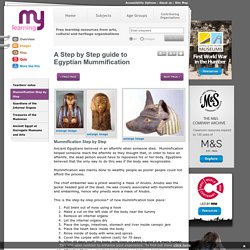
Mummification helped someone reach the afterlife as they thought that, in order to have an afterlife, the dead person would have to repossess his or her body. Egyptians believed that the only way to do this was if the body was recognisable. Mummification was mainly done to wealthy people as poorer people could not afford the process.
The chief embalmer was a priest wearing a mask of Anubis. Anubis was the jackal headed god of the dead. This is the step-by-step process* of how mummification took place: If the person had been a Pharaoh, he would be placed inside his special burial chamber with lots of treasure! *To see a more detailed explanation of the mummification process, see another My Learning resource: Make me a mummy! Mummy Experiment - learn how mummies were made in Ancient Egypt. Have you ever wondered why every time you eat salty foods, you get thirsty?

Or why fresh vegetables tend to shrivel up when you sprinkle salt on them? The answer is simple. Salt is a desiccant - it helps remove water from things, including human bodies. Which is why the Ancient Egyptians used salts when they were mummifying bodies. In this experiment, you can test different salt compounds and to find out which makes the best mummified apple. Materials 2 fresh apples large box of table salt large box of Epsom salts large box of baking soda knife eight 12-oz disposable plastic cups measuring cup large mixing bowl pen masking tape sensitive balance or food scale (optional) paper and pencil Slice the two apples into quarters so that you have eight slices similar in size.
Questions Which salt would seem to work best at making an apple mummy? Salts and special drying solutions played important roles in preserving mummies, but they also served another purpose. Ancient Civilization History Living Books. Collection_Highlight_Nefertiti.pdf. To_Live_Forever_Teacher_Packet.pdf. Brooklyn Museum. The Brooklyn Museum's collection of ancient Egyptian art, one of the largest and finest in the United States, is renowned throughout the world.
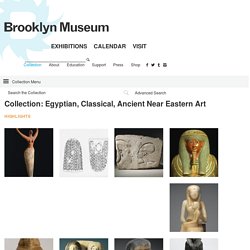
The Museum began acquiring Egyptian antiquities at the beginning of the twentieth century, both through purchases—such as a group of Egyptian objects collected by Armand de Potter in the 1880s—and through archaeological excavation. Between 1906 and 1908, the Museum sponsored an expedition that dug at very early sites in southern Egypt and brought back numerous objects of historical and artistic value. The Art of Ancient Egypt. The Art of Ancient Egypt: A Resource for Educators Edith W.
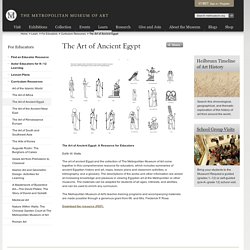
Ancient India - Ancient Civilizations for Kids.